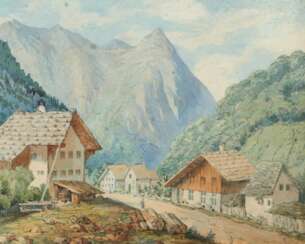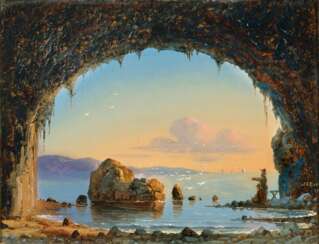m 1826





Henri-Joseph van Blarenberghe was a French painter.
During the reign of Louis XVI of France Henri-Joseph became a specialist of battle scenes, due to the fact that he was a military painter in the retinue of the French army, as was his father.
He also devoted himself to painting miniatures, to decorate boxes for smoking tobacco, made of wood or precious metals: gilded silver, gold, even gold and platinum. Excellent at capturing the details of clothing and decorations, he finished his little boxes with particular accuracy and grace.
During the period of the French Revolution Henri-Joseph Van Blarenberghe devoted himself to painting historical scenes. He made gouaches with court scenes, with pleasant animated landscapes. His paintings are a testimony to the life of the time in France.


Anton Doll is a German landscape painter of the Munich School. His famous works include views of his native Munich as well as images of village life near the city, especially winter motifs.


Karl Theodor von Piloty was a German academic painter.
Karl Theodor von Piloty began as a genre painter and is considered one of the most important representatives of realistic historical painting, distinguished by the detailed accuracy of historical scenes and clothing. In 1874 he was appointed director of the Munich Academy of Fine Arts.


Anton Doll is a German landscape painter of the Munich School. His famous works include views of his native Munich as well as images of village life near the city, especially winter motifs.


Karl Theodor von Piloty was a German academic painter.
Karl Theodor von Piloty began as a genre painter and is considered one of the most important representatives of realistic historical painting, distinguished by the detailed accuracy of historical scenes and clothing. In 1874 he was appointed director of the Munich Academy of Fine Arts.


Anton Eduard Kieldrup was a Danish artist. He studied painting at the Royal Danish Academy of Fine Arts in Copenhagen.
Anton Eduard Kieldrup belonged to the young generation of landscape painters. He broke free from the influence of his predecessors as a landscape painter and depicted the nature of his homeland in fresh colours rather than arrangements.


Anton Eduard Kieldrup was a Danish artist. He studied painting at the Royal Danish Academy of Fine Arts in Copenhagen.
Anton Eduard Kieldrup belonged to the young generation of landscape painters. He broke free from the influence of his predecessors as a landscape painter and depicted the nature of his homeland in fresh colours rather than arrangements.


Anton Eduard Kieldrup was a Danish artist. He studied painting at the Royal Danish Academy of Fine Arts in Copenhagen.
Anton Eduard Kieldrup belonged to the young generation of landscape painters. He broke free from the influence of his predecessors as a landscape painter and depicted the nature of his homeland in fresh colours rather than arrangements.


Carl Maria von Weber, full name Carl Maria Friedrich Ernst von Weber, was a German opera composer and conductor during the transition from classical to romantic music, pianist and music critic.
Weber was born into a musical and theatrical family, and his father cherished dreams of making him a second Mozart. The young Weber received his first appointment when he became the musical director of Duke Eugene of Württemberg, for whose private orchestra he wrote two symphonies, then he was secretary at the court of King Frederick I of Württemberg. At the same time he composed musical works, gaining experience and knowledge.
In 1813 Weber was appointed conductor of the opera in Prague, and four years later he was appointed director of the German opera in Dresden. Here he deployed his talents, taking on the entire job of preparing an opera production: he selected the repertoire, staff and actors; he handled the scenery, lighting and staging, as well as the orchestra and singers, taking special care to ensure that each performer fully understood the words and plot of each opera. The composer also found time to compose his own works.
During this period he created the opera The Free Rifleman (1821), where he was able to free German opera from French and Italian influences. The opera was first successfully staged in Berlin and then traveled throughout Europe. "The Free Rifleman" is the most popular German opera written to date, and it marked the beginning of German Romantic opera. Weber also wrote the operas Euryanthe (1823), Oberon (1826), and others.
Carl Weber composed many fugues, sonatas, concertos, and sacred music, and was also one of the significant piano virtuosos and music critics. From 1809 to 1818, he wrote a considerable number of reviews and quite incisive music criticisms. All his activities, music and critical writings promoted the ideals of Romanticism as an art in which feeling prevails over form and heart over head.


Anton Doll is a German landscape painter of the Munich School. His famous works include views of his native Munich as well as images of village life near the city, especially winter motifs.

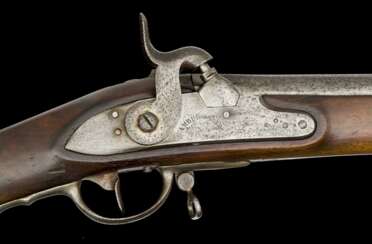

















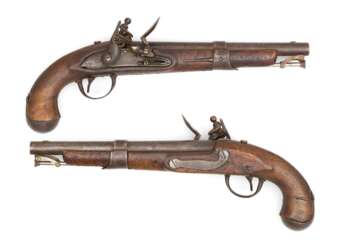









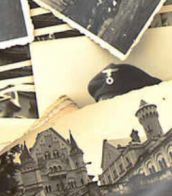


















![EXPÉDITION D'ÉGYPTE [LE PÈRE, Jacques-Marie (1763-1841) et Gratien LE PÈRE (1769-1826)]](/assets/image/picture_4260212/a4ba1/sjjzgn9bhgtpyrvctoiua2rrkb9kfnhzrsxisikusj5ylgnuffmmrf39-g1nespn1729545597jpg__fix_374_244.jpeg)
![EXPÉDITION D'ÉGYPTE [LE PÈRE, Jacques-Marie (1763-1841) et Gratien LE PÈRE (1769-1826)]](https://veryimportantlot.com/assets/image/picture_4260212/a4ba1/sjjzgn9bhgtpyrvctoiua2rrkb9kfnhzrsxisikusj5ylgnuffmmrf39-g1nespn1729545597jpg__fix_374_244.jpeg)








